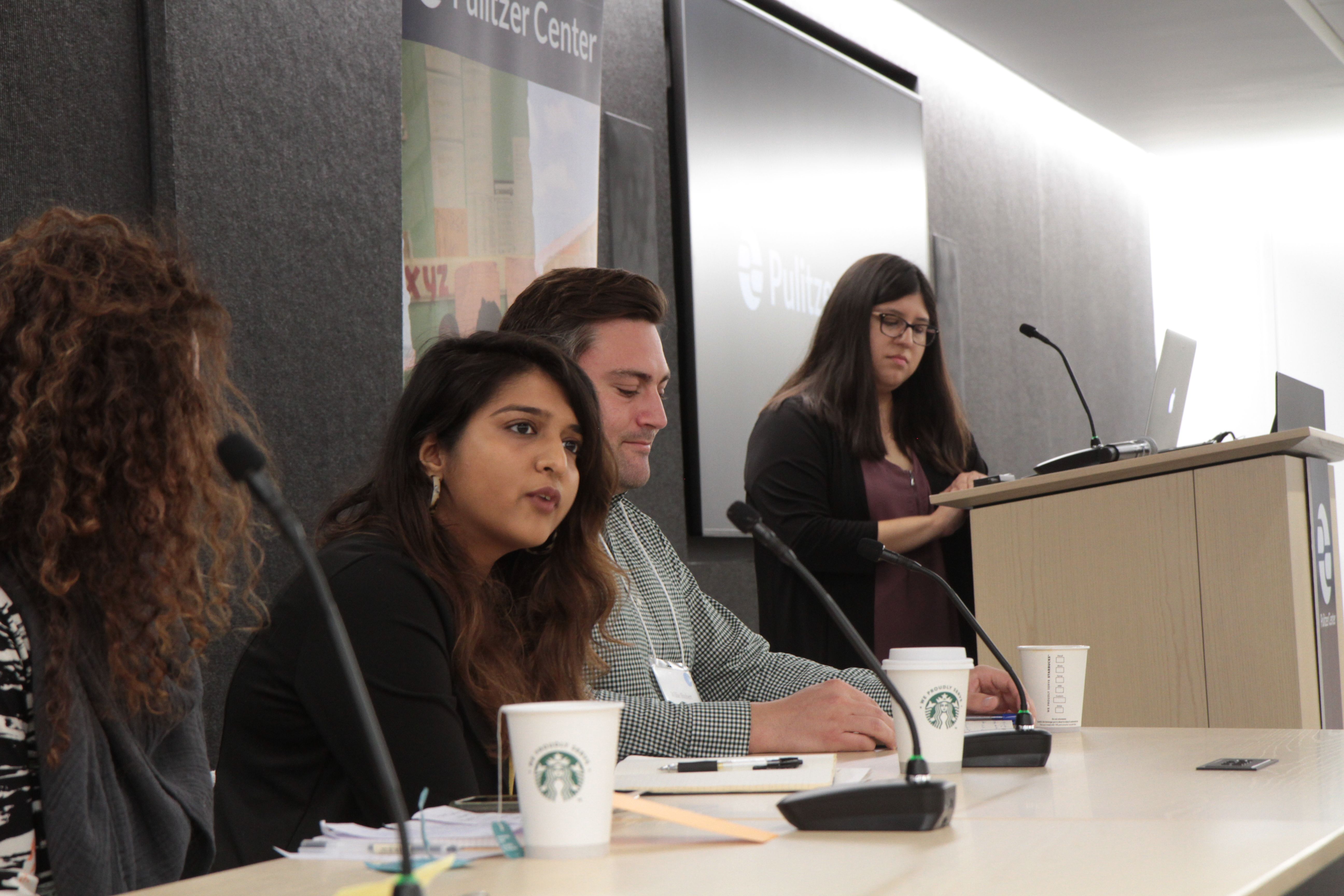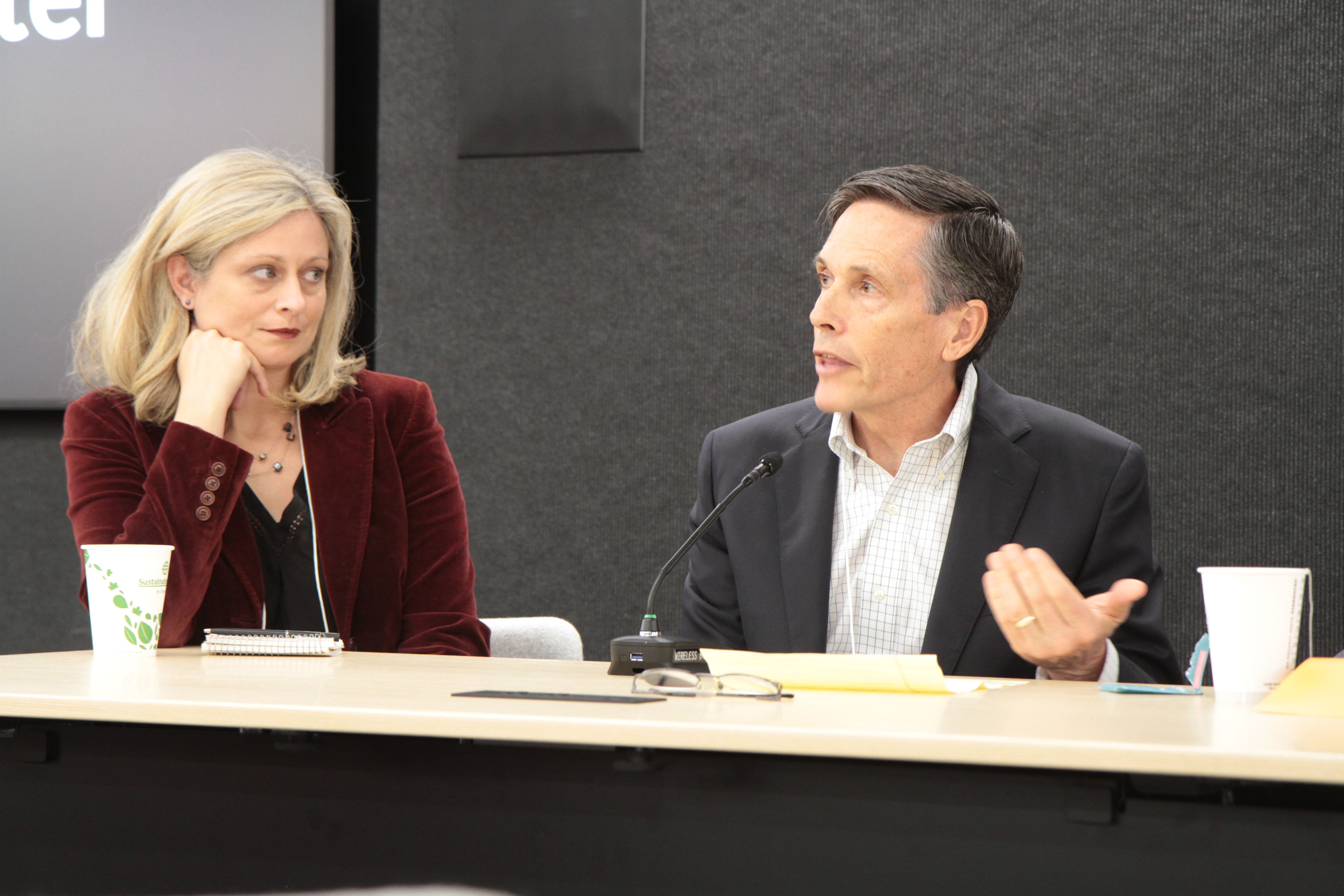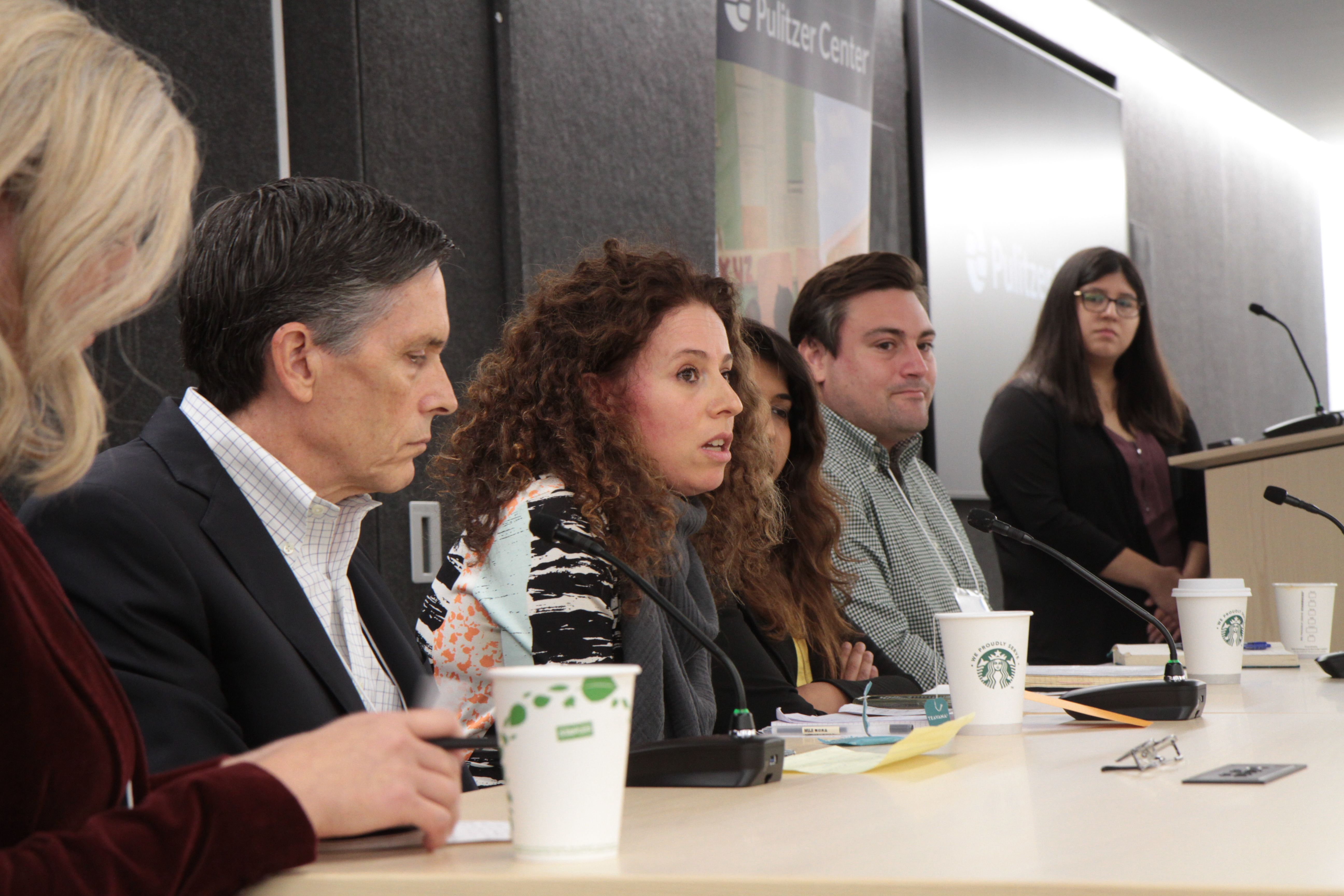Pulitzer Center reporting fellows come from 36 universities, journalism schools, HBCUs, schools of public health, community colleges, and liberal arts colleges. In 2019, our 43 reporting fellows traveled to 29 countries to report on urgent issues often overlooked in the media. On October 18 and 19, the Pulitzer Center brought all the 2019 fellows to Washington for its sixth annual Campus Consortium Student Fellows Washington Weekend.
How do you craft a pitch that gets accepted, especially as an emerging journalist? The Pulitzer Center gathered a group of experienced editors with diverse topical and media expertise to answer this pressing question as part of the 2019 Reporting Fellows Washington Weekend. What follows is a roundup of their best advice.
Moderated by Pulitzer Center editorial assistant Jackie Calderon, the panel comprised Willie Shubert, global director of Mongabay; Shweta Gulati, mobile storytelling producer and editor at National Geographic; Sarah Wildman, Foreign Policy’s deputy editor for print, host of the First Person podcast, and Pulitzer Center grantee; Peter Copeland, former editor of the Scripps Howard News Service and author of Finding the News: Adventures of a Young Reporter; and Dayna Myers, managing editor of Global Health NOW.
1. Know your publication
Yes, your top priority should be having a great story, but it also needs to be a great fit. The editors agreed that it pays to spend time researching the publications you’re reaching out to and tailoring your pitch for each. How does your reporting fit into an existing conversation without repeating work the publication has already run? “Even though we’re in a digital moment, you have to think about calendars,” Wildman added. Some publications are looking for content to post the next week, while others schedule their lineup months in advance.
Gulati offered another tip for journalists who want to make editors' lives easier: The editors you’re pitching may well have to pitch your project on up the chain of command. Journalists can make it easier on them, she said, by clearly and concisely answering in the pitch: Why this publication, and why now?
2. Pitch yourself
So you’ve got a great story, and you’ve found the right publication to run it. Now, why are you the best person for the job? “Editors are taking a risk with you to some degree,” said Wildman. “The question is, why would you take a risk on this person?” Self-promotion is extra work for emerging journalists, but it can also be the first step to building lasting relationships. “I want stories,” said Copeland, “but what I really want is talent. The person you’re investing in [as an editor] can produce stories for years.”
Panelists reminded the room that self-promotion doesn’t end with the pitching process, either. Increasingly, publications expect journalists to cultivate a professional social media presence, and to use their platform to share their work. “One way that we might want to keep working with freelancers is, are they helping to stir discussion about their work?” Myers commented. What’s more, publications are closely monitoring clicks, and social media is a way to both drive and track traffic to your story.
3. Be concise
“Your first chance to make an impression is in your subject line,” said Myers. Global Health NOW is an online-only publication that prefers to keep content snappy rather than wading into longform territory, so a journalist’s ability to hook the reader quickly is key in the pitch as well as in the final story. But while the pitch is a great place to show off your skills in brevity, it may not be the best forum for showcasing your lyricism. “I’d rather see a clip that shows you can write narratively than you writing a very scene-y lede in a pitch,” Wildman said.
4. Be flexible
“Sometimes your pitch is a starting point and not an endpoint,” said Wildman, who recommended being open to revising your story and its angle if an editor expresses interest. Shubert prepared two sample pitches–one better than the other–which the editors dissected before the audience. Of one example pitch, Myers said, “This one is not really geared toward a health publication, but there’s enough effort there that we might say, this really isn’t a good fit with what our priorities are for publishing, but if you have an angle that you’re interested in pursuing on health effects...we might be interested in talking.” Approaching editors as potential collaborators, the panel agreed, can lead to stronger relationships and stronger stories.
5. Value yourself
Finally, panelists acknowledged the difficult media landscape young journalists face, and had some advice for those who intend to make a living in the profession. Wildman acknowledged the balancing act freelancers do, and that the need to continually produce clips sometimes necessitates working for little or no money. Myers recommended building on successful but low-paying assignments to get bigger, better-paying gigs at the same publication.
Shubert advised freelancers to be upfront. “Have a first proposal of what rate you want rather than saying, what rate will you offer me?” “If you only want to be published, that’s fine also, but if you’re going to try to make a living, you have to start right away and think about the money, and not be shy about it,” Copeland advised. “They’re not doing you a favor” by paying you for your work, he reminded the room. “They’re recognizing your worth, and it’s an investment to them that they’re expecting a return on.”
Click the links below to view blogs and videos from Washington Weekend:





